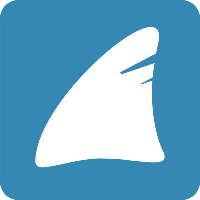 FIN Framework Online Docs
FIN Framework Online Docs
Welcome to FIN Framework Online Docs
This is the home of the FIN Framework Online Docs space.
To help you on your way, you can use the nav tree on the left to drill down thru the Topic Pages or simply try the search on the left at the top to find what you are looking for in this version.
If you search using the right upper corner box, you will be searching across all the available spaces.
Click on Spaces, in the left upper corner, to see all the available spaces.
ENJOY!
Overview
The FIN 5 release contains many new features and additional benefits, including an all-new Host App, brand new database builder app, folio app, and system configuration UI, to enable faster engineering. A new template creation wizard also makes integrating controllers faster and easier, further reducing configuration time for systems integrators and OEMs. Numerous changes have been made to enhance product robustness and enhanced cybersecurity as well. And FIN 5 leverages the latest Haystack 4.0 standard throughout the framework to stay on the leading edge of open technology.
Let's take a look at what's new in FIN 5.
The Host App
The new FIN Host App has been completely redesigned to work independently from, and outside of a project. User accounts are now managed globally and work across multiple projects right from the host app. It brings new security enhancements such as strong passwords and better user management. Additional project management tools include viewing licenses and usage, installing and updating Pods, and links to new interactive developer docs.
Note: Users logging in will by default be directed to the Host not a specific project. However, there are couple ways to get the users to login to a specific project by following this doc Launch Specific Project.
DB Builder
FIN 5’s new DB Builder is built for speed. The new UI helps visually organize the database and the workflows are optimized for faster database configuration. The DB Builder is entirely HTML5 and incorporates the powerful use of multiple trees to see and manage all aspects of a project database all in one place.
As we dive deeper into the Equip Tree, we'll notice that each additional level of the architecture has an essentials tab to show the tags contained in the record and a summary tab that shows a grid of the related records below it. The individual point view has been simplified and enhanced vision to show concepts such as read, write, histories, and schedule (if schedulable). There is also a new property editor pop-up window that displays the individual record’s tags and enables more in-depth viewing & editing of that record.
The connectors menu is also now it's own individual tree and allows the user to easily add, discover, and manage connections to field devices and their data points.
In addition to the original Equipment tree view, new trees show information organized by application; Graphics, Programs, Connectors, Schedules, and more. New power tools support drag-and-drop of records: to create Relationships, to Clone, use Tag bundles, apply Templates, add Histories, add Alarms, and do Conversions. Advanced features include the Jobs manager and Saved filters.
Graphics Builder
The graphics builder has had a number of incremental enhancements to increase efficiency when creating custom graphics. One notable enhancement is the implementation of easy-to-use dashboard components, such as charts and gauges. Now, system integrators and advanced end users can create system performance and KPI visualizations that are simple.
Logic Builder
In the logic builder, we’ve added new blocks that comprise what we call the State Machine. This allows users to build a simplified sequence of operation using the new state and mode blocks, which greatly simplifies the creation and validation of complex control sequences.
Folio App
Another major change can be found in the Folio app, which has also been completely redesigned using HTML5.
Folio allows you to run queries against your database, displays results in a table format, allows batch editing and features a new column for marker tags where users can further filter the query results by simply clicking on a tag.
API Docs
The FIN Framework is ideally suited for developers and OEMs to further extend the framework. FIN 5 contains new API documentation, an interactive help system, and additional open APIs.
The docs and interface can be launched from the new Host app or directly from the app launcher menu; just click on the Docs Icon. The interactive Table of Contents makes it easier for users to navigate and learn more about the FIN Framework APIs.
Templating
Lastly, one of the most powerful new features to help SIs configure projects faster and OEMs to extend the framework is the new template architecture. SIs and OEMs can make their own templates that include a payload for creating the database, graphics, summaries, alarms, and other assets. Once a user has finished creating their templates, they can utilize the new “template wizard” that rapidly matches imported or discover information with their templates to create an entire project automatically. This means now the navigation, point graphics, custom graphics, summary graphics, control logic, alarms, and O&M manuals are dynamically created and become part of a nearly completed project.
These are just a few of the many enhancements that come with FIN 5 making it more open, fast, robust, and extensible than ever before.
Also visit our website for the original announcement of FIN 5 rollout, and watch the FIN 5 overview video highlighting what’s new in FIN 5.
Installation Guides
Installation guides can be found here: https://finproducts.atlassian.net/wiki/spaces/FINFramework/pages/770708234